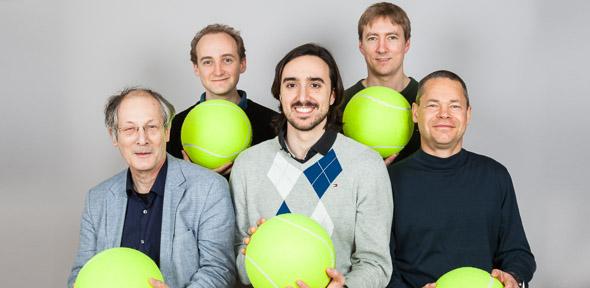
The tennis ball team turn their attention to the Curse of Dimensionality
Graduate student Stefano Martiniani and colleagues have developed an improved approach to solving the problem known as the “Curse of Dimensionality”.
In rough terms, the “Curse”, refers to the apparent impossibility of making calculations in situations where the number of variables, attributes, and possible outcomes is so large that it seems futile even to try to comprehend the problem in the first place.
A simple example is this: Imagine that you have a cup containing 100 grains of rice. You pick it up, shake it, and put it down again. The arrangement within the cup changes, but what are the chances of that arrangement occurring, relative to all other possibilities?
While most people would reasonably consider that problem not just impossible, but largely pointless, it illustrates the type of maths needed to make predictions about much bigger – and more meaningful – issues.
Those include, for example, trying to model the likely shape and impact of a decaying ecosystem, such as a developing area of deforestation, or the potential effect of different levels of demand on a power grid. More fundamentally, the same class of calculation would theoretically enable us to get to grips with the statistical probability of our own existence on Earth, or the chances that life might happen again, elsewhere in the Universe.
“There is a very large class of problems that can be solved through the sort of approach that we have devised,” says lead author Martiniani. “It opens up a whole world of possibilities in the study of things like dynamical systems, chemical structure prediction, or artificial neural networks.”
The research team included Julian Schrenk, David Wales and Daan Frenkel in the department and Jake Stevenson at Microsoft.
This news item has been adapted with permission from a longer article on the University of Cambridge Research web pages.
